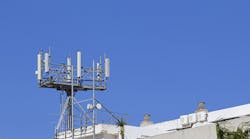Growth Predicted For LTE-U Small Cells Despite Wi-Fi Coexistence Concerns
With mobile data usage growing at an exponential rate, wireless vendors are turning to carrier aggregation to augment the capacity of Long Term Evolution (LTE) networks. Instead of combining licensed spectrum bands, however, wireless vendors have begun to evaluate the use of the unlicensed spectrum to offload data traffic. According to a recent report from SNS Research, small-cell deployments that support LTE in the unlicensed spectrum (LTE-U) are expected to earn revenues of nearly $2 billion by the end of 2020.
LTE-U technology uses unlicensed spectrum bands to transmit the LTE signals that are unloaded from the licensed spectrum. In doing so, it enables higher data capacity and seamless mobility between small cells. The licensed band signals preserve the necessary signaling and scheduling required for a reliable connection. In early trials, LTE-U has targeted the unlicensed 5-GHz band, which is shared by Wi-Fi, Bluetooth, and other technologies. Korean wireless carrier LG Uplus, for instance, has demonstrated twice the speed of its commercial LTE-A service by combing 60 MHz of unlicensed 5.8-GHz spectrum with 20 MHz in the licensed LTE spectrum.
Designed for small-cell deployments, LTE-U technology is an alternative to local Wi-Fi networks. But the fact that LTE-U operates on the unlicensed 5-GHz spectrum is drawing criticism from service providers that have invested heavily in Wi-Fi technology. The main concern is that unregulated access to the unlicensed 5-GHz spectrum will lead to Wi-Fi networks becoming clogged and even crippled by data traffic offload.
These concerns persist in spite of plans for the “fair coexistence” of the technologies. Qualcomm has stated that LTE-U technology causes no more interference to Wi-Fi nodes than other Wi-Fi nodes in the immediate area. And according to a statement from the LTE-U Forum, an advocacy group for the standard, LTE-U is in full compliance with FCC regulations.
As wireless vendors aggregate more unlicensed spectrum bands, the demand for LTE-U small cells is expected to rise at a compound annual growth rate (CAGR) of 80% between 2016 and 2020, according to the SNS report. This growth will be supported by several large companies operating within the LTE standard, including Verizon Wireless, Alcatel-Lucent, Ericsson, and Qualcomm.
